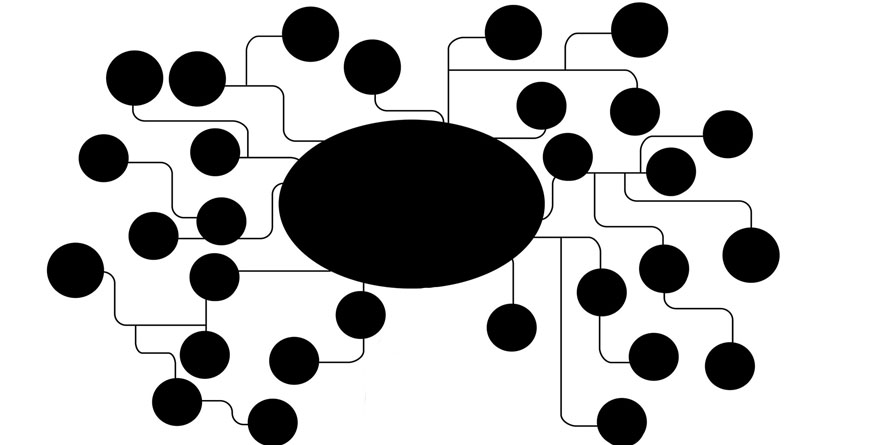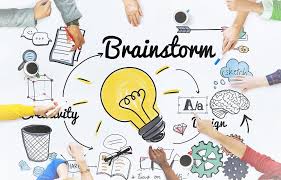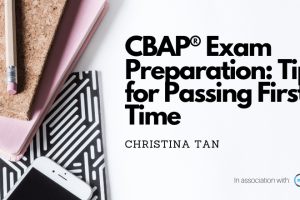
What is Mind Map?
Introduction for Mindmap
Mind map is a diagram generally used for organizing information visually. A mind map is hierarchical and depicts relationships among other pieces of the system. It is developed around a single concept, drawn as a picture in a blank page, to which related representations of subjects such as images, and phrases. Key topics are directly connected to the central topic, and other topics branch out from those. Topics or ideas that are farthest are less important and the ideas that closest to the central idea is most important. Mind maps can also be drawn by hand, either as “notes” during a lecture, meeting or planning session. Mind maps are a type of spider diagram.
The concept was brought by Tony Buzan and is based on patterns found in nature, and on research on how humans think and how the brain works.
Guidelines for Creating Mind Map Image
- Begin the image at the center with at least 3 colors.
- Use images, codes, symbols, and dimensions in mind map image.
- Choose keywords and print using upper/lower case characters.
- All words or images should be separate and must be in one line.
- All lines should be connected, beginning from the central image.
- The connecting lines become slimmer as they move out from the center.
- Create the lines of the same length as the word or image they support.
- Make use of multiple colors throughout the mind map image, for visual stimulation.
- Create your own style of mind mapping.
How to create a Mind map?
Depicting your task or idea in a picture is known as mind map. There are some steps to follow to create a mind map.
Step1:
Take a plain sheet of paper and use its landscape side. You also need colored pens and pencils.
Step 2.
In this step you have to either paste an image related to your major concept or draw a picture related to your concept. After that write down a keyword which represents the main idea of your concept.
Step 3.
Always right brain is responsible for imagination and creativity. To stimulate your right brain thinking, add images and use colors throughout. Thus, it stimulates creativity and imagination of your right brain.
Step 4.
The main concept that can be derived from the image and keyword you have given in the middle of the page should be explained as mentioned below.
- Draw anywhere from three to ten thick branches leading out from your middle image/keyword.
- Make the branches curve and flow.
- Each branch can be in different colors.
- Select an image and a keyword for each branch.
Step 5.
Draw smaller sub-branches from each of your branches to accommodate the new associations that you are going to make.
Step 6.
Draw third-level branches from each end of the sub-branches. Create also fourth and a fifth level if needed.
Step 7.
Keywords are more important , so it must be used more in the mind map. But not much as it will restrict your thinking capability. Keywords exercise your analytical left brain and help you find the essence of your subject. Using just one keyword per line will give you the freedom to discover lots of creative associations for your keyword.
Step 8.
Use images throughout because it makes the mind map more interesting and more memorable. In addition, pictures generate far more associations than words do.
Step 9.
When you’re done with your initial mind map, add details; jot down questions that radiate from particular nodes; and draw little “vines” that connect ideas on different branches.
Uses of Mind map
Mindmap is a brain method which can be used to generate, visualize, structure, and classify ideas, and as an aid to studying and organizing information, solving problems, making decisions, and writing. Mind map lets you to develop a logical sequence and detailed organization of your material, while encouraging imagination and spontaneity. Mind maps can be used for many things. Some of the uses are listed below.
Mind maps for Idea Generation
Draw an image in the middle of the page and keyword that represents the topic for which you want to generate ideas. From that image, start to radiate out every idea that comes into your mind on that topic. Create branches, sub branches, third level sub branches and fourth and fifth level sub branches if needed for each idea.
Finally, look through your mind map and decide which idea can be implemented.
Mind Maps for a Business Plan
Write the name of your business or your business idea in the middle of the page. The major components of your business plan can be mentioned as branches which includes business concept, legal structure, marketing plan, a market analysis, financials, and sales strategy. Create sub branches for each component. For example, if one of your components or branches is “Marketing Plan” , the sub branches can be the following such as brochures; press releases; web site; social media; advertisements; and so on.
Mind Maps for Project Management
Write down the project name in the center of the page. Sub branches could be, What are the main tasks that need to be completed for the project?
Divide the main tasks into subtasks and write those down as third level branches. Add duration, cost, materials needed etc for the project as the fourth and fifth level branches.
Mind Map for Finances
Creating a mind map of your finances is a great idea as it illustrates the big picture of your finances. Total amount should be mentioned in the middle of your page. The branches should include things such as Income; Expenses, Debt, Investments, Retirement Plan, Estate Plan, and so on. Create sub-branches for each branch.
Mind Maps For Problem Solving
To solve a problem, insert an image in the middle of the page which represents the problem, along with the keyword. Then, draw six branches for the following questions such as
- What?
- When?
- Where?
- Why?
- How?
- Who?
Create sub branches and then write down the answers for each question and proceed with solutions to your problem in the third, fourth and fifth level branches.
Mind Maps to Take Notes During Meetings
When you’re at an office meeting, mind map will be very helpful. Write down the purpose for the meeting in the middle of the page. Mention each agenda item as the branches on your mind map. After that add sub branches to each agenda. Sub branches can be the ideas, facts, budget, who is going to do what, and so on for each agenda.
Mind Maps to Retain Information From Books and Articles
There is a way to remember what you have read in books and articles. For example, if you are reading a book, the branches of the mind map can be the chapter headings of the topic. Main ideas of each chapter can be your subheadings or sub branches. Third level branches can include examples, quotes, and even your comments on what you just read. In the fourth level you can mention the ideas that the book or article has inspired you to take.
Mind Maps for To-Do List
Write “to do” in the middle of the page. Identify your main categories and create branches. For example: Blog, Work, Home, and Errands all these can be your branches. List the tasks that need to get done for each of the categories can be mentioned as sub-branches.
For example, you could add the following sub-branches for the “Blog” category:
Write a blog post, share the blog post on social media, spend 15 minutes on Twitter, visit three blogs in my niche and leave comments, and email potential sponsors. For a third level branch you could further add time limits for each task; include more information about the task etc.
Benefits of Mind Map
Simple
- It is easy to make
- It is easy to filter
- When required it can be expanded
Visual
- Anyone can easily remember the graph
- It is easy to overview
- It showcases links and relationships between ideas
Creative
- Assists in showcasing imagination on paper
- Encourages to create
- Helps in improving productivity of the system
Collaborative
- Helps in creating team spirit
- Encourage communication group
- Helps in optimization of work processes
Some of the application for creating Mind Map image:
- Mindjet
- XMind
- Coogle
- Freemind
- MindNode
- MindMapple
- NovaMind
- Blumind
- Sketchboard
- WiseMapping



